On the surface, gouache (pronounced ‘gwash’) and watercolor seem similar, confusingly so. Let’s go in for a closer look to see how the two differ and how they behave the same.
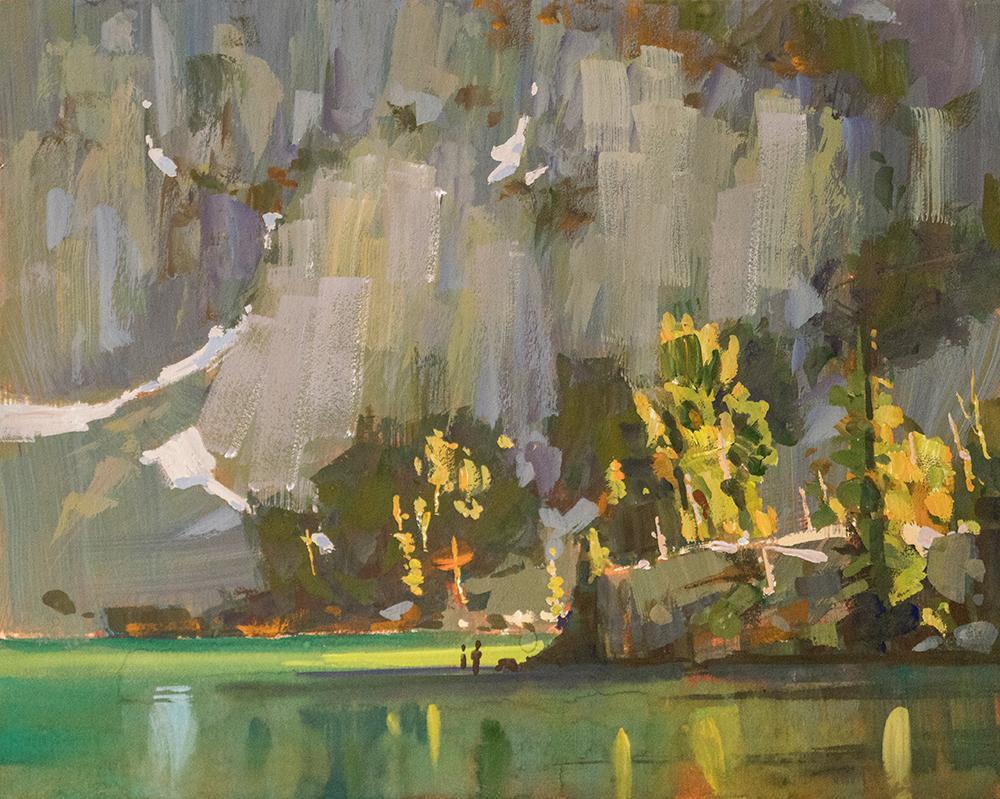
Can gouache be used like watercolor?
Gouache, a member of the watermedia family, can absolutely be used like watercolor. Artists can use gouache on watercolor paper and any other surface suitable for watercolor. You can use your watercolor brushes with gouache without fear of ruining them, and you don’t need to buy any special chemicals for clean up because, like watercolor, gouache is water soluble and can be cleaned up with water. As with watercolor, you can rewet gouache with water to make alterations or thin it with water to make it more transparent.
In fact, you can mix gouache paints with watercolor paints and use them together, as artist Donna Zagotta does.
So are gouache and watercolor the same then?
No. While you can use the same paper and brushes, gouache will handle differently than watercolor. That’s because on a structural level, it’s manufactured differently than watercolor.
How is gouache different than watercolor?
The quick overview: Gouache is opaque, matte, and can be blended. Gouache dries quicker and darker than watercolor.
On a structural level, all paint consists of color particles suspended in medium. Oil paint is color particles suspended in oil. Acrylic is color particles suspended in polymer. Watercolor and gouache are color particles suspended in gum arabic.
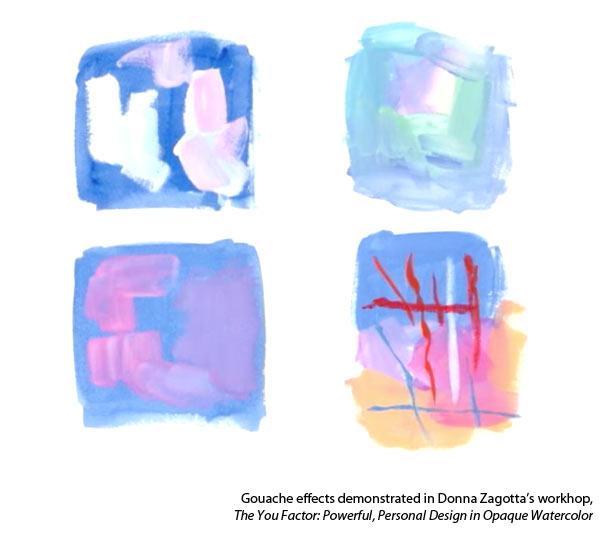
And not all particles are created equal.
Compared to watercolors, gouache has larger particles of pigment, and its particles are packed more tightly together. Large, tightly packed particles leave less space for light to slip through, and that’s what makes gouache opaque. Some manufacturers include a white chalk additive to further reduce transparency.
This level of opaqueness makes gouache great for illustrators who want to ensure accurate photography and reproduction of their work. That same quality makes gouache terrible for those glowing effects so sought after by transparent watercolorists.
Transparent pigments have tiny particles that aren’t packed together. This allows light to bounce through their paintings, hit the white paper and then bounce back out to the viewer’s eye, which creates spectacular luminosity.
Why would I choose gouache?
Artists like Sarkis Antikajian use gouache for his plein air kit because it’s easy to carry a palette (like watercolor) and he can still paint light on dark. It’s also water-based so it’s easy to clean up.
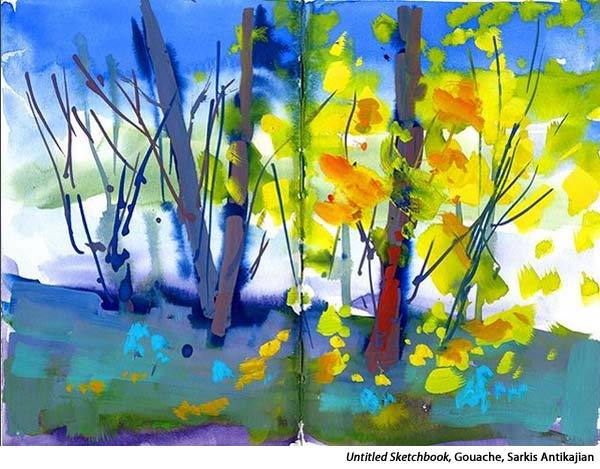
Watermedia artist Donna Zagotta uses gouache because she knows there are ways she can manipulate gouache paint that she can’t with transparent watercolor. For example, she can melt colors into one another. She does this by starting with a base color (in this case ultramarine blue.) When the color is dry she can add a second color on top.
“The first stroke down will stick,” says Zagotta. “But the more I play with it the more it starts melting the colors that are underneath…. So I’m using an undercolor and an overcolor mixed together to create the third color.”
Zagotta has two palettes. One with her transparent watercolors and one with her gouache colors. She adds white gouache paint to her transparent watercolors so that they take on gouache characteristics.
For artist Carla O’Connor, gouache is her go to watermedia because she loves the textures she can achieve. “This medium brought me full circle in my career,” she says. “I can paint with gouache much the same way as I painted in oils.”

“Gouache sits on the surface of your paper so it allows you tremendous freedom in lifting possibilities and corrections and changing, which then again gives more and more different textures and technique possibilities,” says O’Connor.
O’Connor also loves the grays you can get with gouache. In fact, she loves the gouache grays so much that she keeps part of her palette dedicated to them.
“I use to clean it up all the time,” she says of the lid of her palette where the grays live. “ I don’t do that anymore … I just keep adding paint to it. I can make it darker or lighter or a different color all together. But I use it for mixing all my grays.”
That gray, which she calls her Mother Color because it’s a combination of all her colors, is now a signature of her work,
Are gouache paints just opaque watercolor?
This gets confusing because of language and how artists use terms.
Some artists refer to gouache and watercolor as totally separate media. However, some artists, like Donna Zagotta, use the word opaque watercolor to mean gouache.
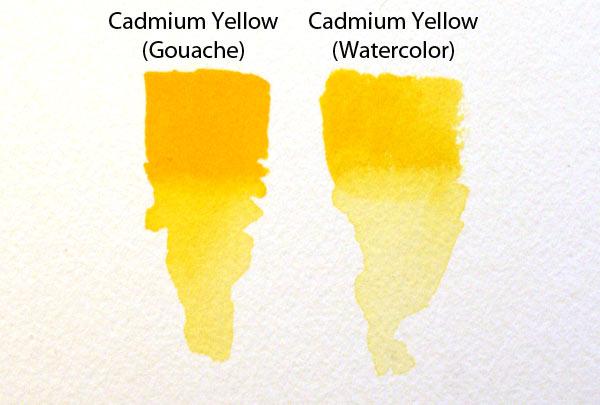
So then when you hear artists talk about opaque watercolor they could either be referring to gouache or to particular watercolor pigments, like the cadmiums, that are naturally opaque.
How do I make my gouache transparent?
If you have a set of gouache paints, and you’d like to have transparent washes in your paintings, no need to run out to the art store just yet. The good news is that you can make almost any pigment transparent. With watercolor and gouache, you simply add more water. This creates more space between those big pigment particles and allows light to bounce back through. Just make sure to allow a layer to dry completely before going back in for a second glaze.
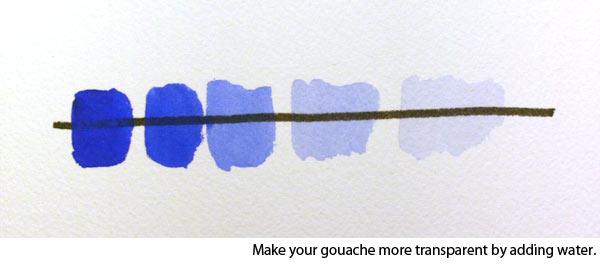
To learn more about the process, check out Donna Zagotta’s “The You Factor: Powerful, Personal Design in Opaque Watercolor,” Carla O’Connor’s “Figure Design in Gouache: The Process” or Mike Hernandez’s “Creating Drama with Light and Color.” See a trailer for Mike’s video here:
.
For more inspiring stories like this one, sign up for our free weekly e-newsletter.



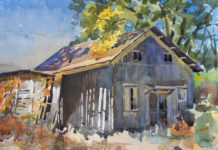




Thank for your article Do I need any special material for gouache painting? I have started painting watercolor I ll highly appreciate your comments Lilia from Argentina
Great topic and great article to address it! Thank you!
Thanks, great article for understanding gouche!
Thanks for including me in this article. One last comment— think of Gouache as neither opaque or totally transparent. It is more semi transparent —when thinned and used over transparent watercolor it is as if you layed a piece of soft white chiffon on top of an area to add delicult transitions. There is so much more! Give it a try.
Enjoy! Carla
When exhibiting in a Watercolor Exhibit, can you have gouache in the painting or not? I see so many artists using white gouache for splatter or more dimensional snow. Or does the Exhibit have to say Watercolor and Gouache exhibit or entry.
[…] Here’s a nice explanation describing the difference between watercolor and […]
Great article and information. Didn’t realize I could use gauche as oil paints. Thank you
Really an excellent article. Thank you for the clarity and completeness along with the perfect images to illustrate the concepts.
Thank you!
[…] + Read More […]
excellent explanations–thanks–I’ve started using these opaques in my work and now I feel like an artist, not simply a watercolorist.